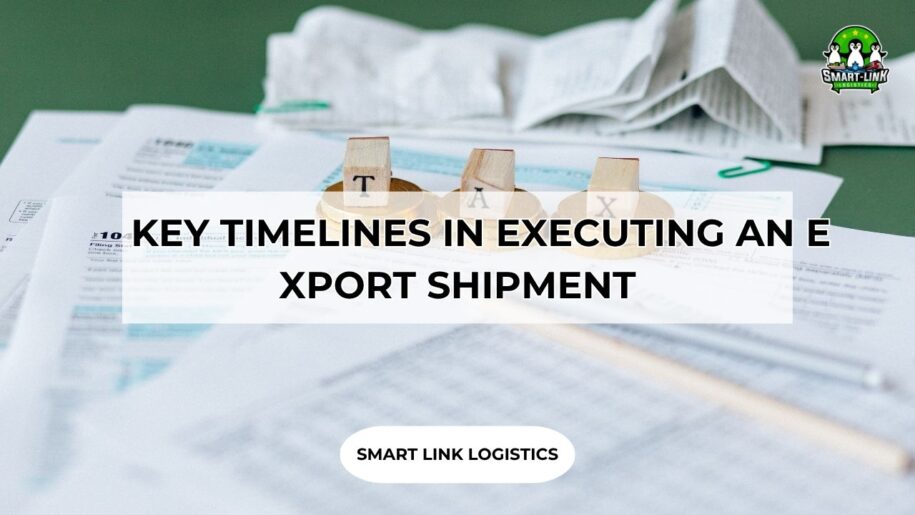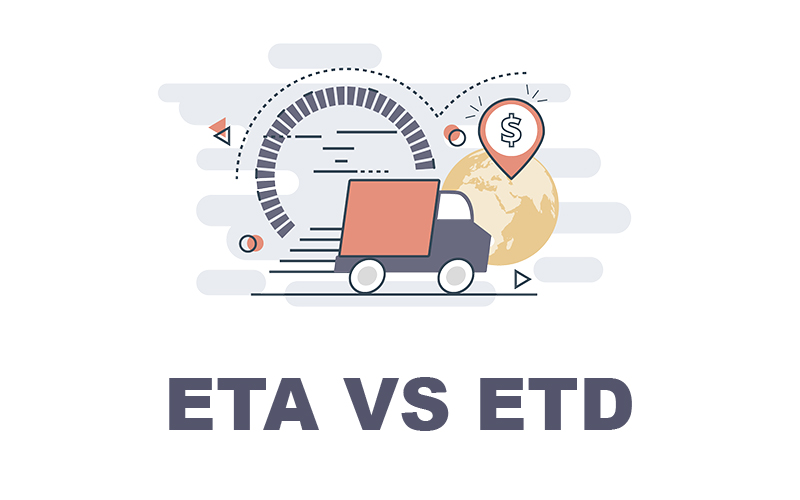
KEY TIMELINES IN EXECUTING AN EXPORT SHIPMENT
In the process of carrying out an export shipment, businesses must pay close attention to important timelines to ensure that cargo handling, transportation, and payment proceed smoothly and on schedule. Strictly adhering to each stage not only ensures that goods are shipped on time but also helps avoid potential risks such as container storage fees, missed vessels, contract penalties, or damage to the company’s reputation with foreign partners.
This article outlines the essential timelines for each stage of the export process.
Determining Timelines During Contract Negotiation
Before signing an international sales contract, exporters should clearly define key timelines related to production and logistics. Among these, the delivery date is the most critical and must be mutually agreed upon. Based on this date, exporters should work backward to estimate the time needed for production, raw material preparation, vessel booking, and arranging payment documents such as Letters of Credit (L/C) if applicable.
Typically, vessel bookings should be made at least 10 to 15 days prior to the Estimated Time of Departure (ETD). If the production cycle takes around 25 days, related timelines for booking and container stuffing must be planned early to avoid delays in delivery.
Preparations After Contract Signing
Once the contract is signed, the exporter moves into the production and booking planning stage. Depending on the product type, manufacturing may take from 10 to 45 days. During the first week, the responsible staff should verify the progress of raw material procurement, packaging, and other technical requirements.
For vessel bookings, the booking deadline set by the shipping line or freight forwarder—typically 10 to 15 days before ETD—must be followed. The shipping line generally confirms bookings within 1–2 days of receiving the request. Booking early is essential to avoid vessel space shortages or the unavailability of suitable containers.
The Pre-Departure Stage (Before ETD)
When goods are ready, exporters must carefully plan several critical steps before the vessel’s departure date. Container stuffing usually occurs 2 to 3 days prior to ETD, depending on the carrier’s closing time—the deadline for receiving containers at the port or ICD—often within 12 to 24 hours before the vessel departs.
Mandatory documents such as the Shipping Instruction (SI) and Verified Gross Mass (VGM) must be submitted 12 to 48 hours before ETD. These documents are essential for the shipping line to arrange transport, issue the Bill of Lading, and ensure accurate customs declarations.
Export customs clearance should be completed at least 1 to 2 days before ETD to ensure timely container release. Delaying customs clearance until the last minute significantly increases the risk of missing the vessel and incurring storage fees.
The Vessel Departure Date – A Fixed Deadline
The ETD (Estimated Time of Departure) is a fixed schedule in most cases and cannot be altered. If the exporter fails to complete delivery and customs procedures on time, the shipment will miss the vessel and must wait for the next sailing. This results in rebooking, document amendments, and possible late delivery according to contractual commitments.
Once the vessel departs, the exporter receives the official Bill of Lading from the carrier. This document forms the basis for issuing commercial documents, processing payment, and assisting the buyer with import procedures.
The Vessel Arrival Date (ETA)
The ETA (Estimated Time of Arrival) is the next key milestone to monitor. This varies depending on the shipping route and can range from 5 to 35 days after ETD. Exporters should promptly inform the buyer of the ETA so they can prepare for import customs clearance, arrange cargo pick-up, complete payment, and organize warehousing.
For payment terms such as T/T after shipment or D/P, timely ETA notification helps ensure on-time payment and prevents storage charges at the destination port.

Document Issuance Deadlines
All documents must be prepared and sent to the buyer in the correct order. The original Bill of Lading (B/L) is usually issued 1 to 3 days after vessel departure. The Invoice and Packing List should be completed before customs clearance to include in the document set. The Certificate of Origin (C/O) can only be issued after the official B/L is available, as with other certificates such as quarantine or quality inspection reports.
For L/C payments, timely and accurate document presentation is crucial to avoid bank refusal. Even minor discrepancies in dates, signatures, or figures can result in rejection.
Payment Deadlines – Linked to All Previous Stages
Depending on the agreed payment terms, exporters must closely monitor payment deadlines to maintain healthy cash flow. With T/T, payment may be required before shipment, immediately after shipment, or with 30–60 days of credit.
For L/C payments, the exporter must submit documents to the bank within the stipulated period, typically within 21 days from the B/L date unless otherwise specified in the L/C. For D/P, documents must be sent promptly so the buyer’s bank can request payment before releasing the goods.
Conclusion
Understanding and managing timelines in the export process not only helps businesses maintain operational control but also ensures compliance and reliability in international trade. Careful stage-by-stage management minimizes resource waste, optimizes scheduling, and reduces the risks caused by delays or procedural errors.
For businesses looking to expand exports or streamline processes, developing a clear, milestone-based timeline should be a top priority from the outset. In the global trade arena, time is money—and sometimes, it is also the very reputation of your company.
Hotline: + 84 902 964 982 to know more about our services

If you require assistance with international import and export of goods, please contact our team at Smartlink Logistics. We are available to provide you with professional guidance on our services and the necessary customs procedures.
SMART LINK: BEST SERVICE BEST YOU


































